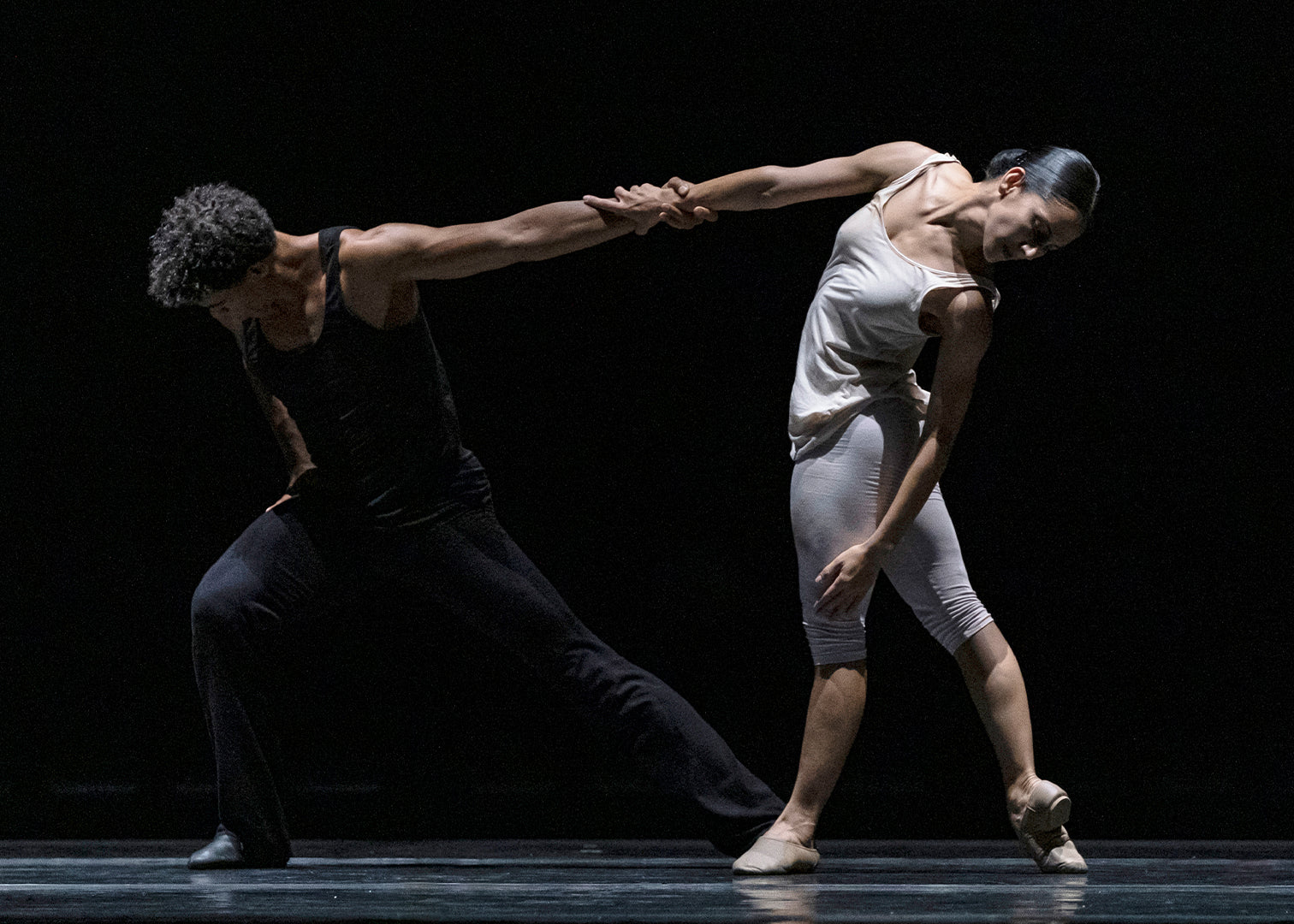Such a disparate meshing of cinematic styles shouldn't work, yet somehow it all hangs together impeccably: the tonal shifts are subtle enough to satisfy on multiple levels. It's a study in growing pains that is richer for the risks to the conventional narrative Hampson has deployed. Bethany Kingsley-Garner, the picture of innocence yet never insipid as Cinders, experiences the first bloom of womanhood, symbolised by a lone rose. Her sleek extensions stretch out like the long shadows of sexuality; longing to be loved, and she even cheekily fashions a 'suitor' to dance with from a man's coat, coathanger and a pumpkin head. But any kind of romantic inclinations are swiftly undercut by the mischievous presence of Eve Mutso, her minxy big Stepsister (nothing ugly here, excepting her attitude problem) who flounces, pounces and flirts with the local lads and her gauche, more easily led little Stepsis (Sophie Martin).
The women are very much the focal point, with Hampson consciously fleshing out roles to otherwise underwritten ladies. The sisters clown, they tumble, they are unequivocal in their agency, unabashed in their sexuality and sass. A scene in the ballroom quickly descends into farce, as the older Stepsister makes eyes at the handsome Prince (Christopher Harrison) but is swiftly palmed off to another. And she's not above kicking a rival where it hurts most, before whisking her little sis away in a ripe parody of a Viennese waltz.
Meanwhile, the Freudian sub-plot of Cinders' Fairy Godmother as mother-substitute pays off beautifully, as Marge Hendrick, almost always on pointe, flickers like a flame in frothy skirts, emulating the grace of Ms Kelly. The glorious Sophie Laplane's Stepmother is sadistic to Cinders—a gold-digger sashaying in suspenders and black dresses who would be villainous were she not so transparent and ridiculous. The blatant contrast in Cinders' mother figures is enormous fun, yet somehow Hampson manages to avoid drawing camp caricatures in each instance.
Jamiel Laurence is the most impressive of the male soloists, a Puckish Grasshopper whose fouettés become acrobatic movements. He is poignant in his scenes with Cinders, as a symbol of the fleeting nature of youth—never to be caught and pinned down. Bugs and butterflies feature heavily in an enchanted garden. So too Cinders must transform, butterfly-like, into Cinderella, self-aware and responsible. No sappy princesses here.
Tracy Grant Lord's mouthwatering designs are like confectionary: her low-lit pistachio rooms, Rococo fronds and golden chandeliers are offset by her stunning costumes, all of which provide a glorious homage to 1930's glamour. As the women of the ensemble spin like images in a kaleidoscope, their skirts most resemble budding azaleas and orchids.
Above all, it is most telling that Hampson has no wedding scene here at all, and the glass slipper completely unimportant. There is instead a melancholy underpinning each pas de deux between the wistful yet intelligent Cinderella and her smitten, shy Prince. Their movements are awkward, tentative. More like a real first date. For “happy ever after,” read a more pragmatic “watch this space,” or even an “it's complicated” . . .









comments